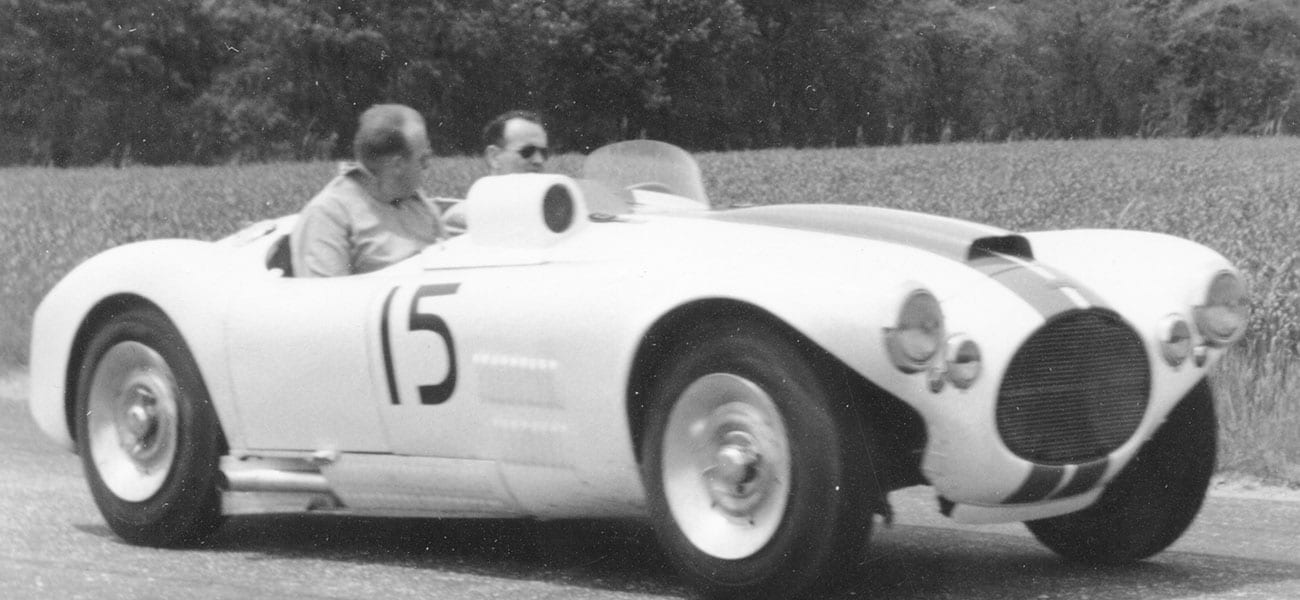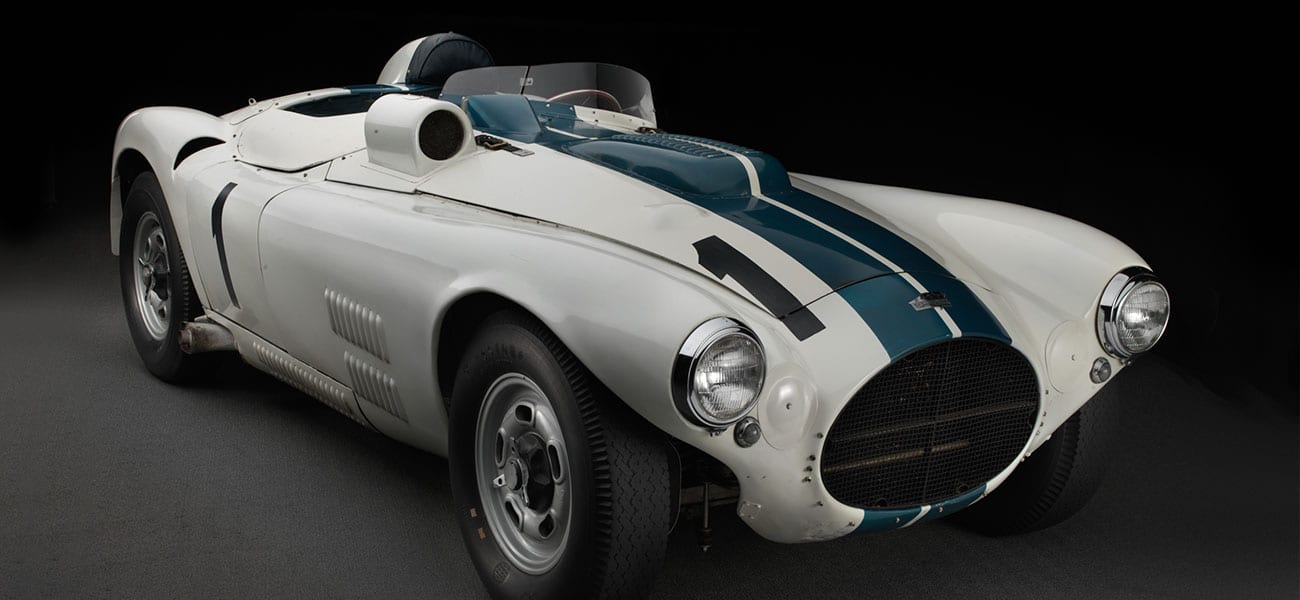Tech Specs
Chrysler eight-cylinder, hemi-head vee engine, four Weber 400DCM downdraft carburetors, 331.1 cubic inches, 300 hp at 5200 rpm.
Before/After
1952 Cunningham


About the 1952 Cunningham C-4R
Despite its power and speed, the Cunningham C-2 had been regarded by motoring pundits in Europe as outrageously heavy and much too big for Le Mans. Briggs agreed. To the extent that the massive Chrysler hemi allowed, the new Le Mans car for 1952 was much reduced – slimmer by six inches, shorter by sixteen and lighter by nearly a thousand pounds.
By now Bill Frick had returned to Long Island, and G. Briggs Weaver – well known for his design of sporting and racing duPont cars of the twenties – had come aboard at West Palm Beach. In Detroit, Chrysler engineers were providing advice and assistance. Two roadsters and a coupe (here displayed alongside) were prepared for Le Mans. Briggs paired himself with Bill Spear, a hard driving amateur on the American sports car circuit. John Fitch, who had become the SCCA’s first national champion in 1951, was paired with George Rice, a talented Eastern midget car driver. Sharing the coupe with Phil Walters was Duane Carter, an Indianapolis veteran. Practice revealed problems. The Chrysler-designed Alfin brake drums began to crack their liners and, with no spares available, would have to be babied during the race. Thus, even before the starter’s flag fell, high expectation was tempered by rude reality. By midnight just one of the Cunninghams was still in the race – this one – with Briggs driving. He would continue doing so for nearly 20 of the 24 hours. The clutch on his C-4R was slipping. That, plus awareness that Bill Spear “liked to go like the hammers of hell” and that Bill’s less-than-perfect vision would present grave dangers when the early morning fog rolled in, had convinced Briggs that he should remain at the wheel. He was determined that a Cunningham would finish the race. This one did, in 4th place. It had been an epic drive.
Photos – Peter Harholdt












